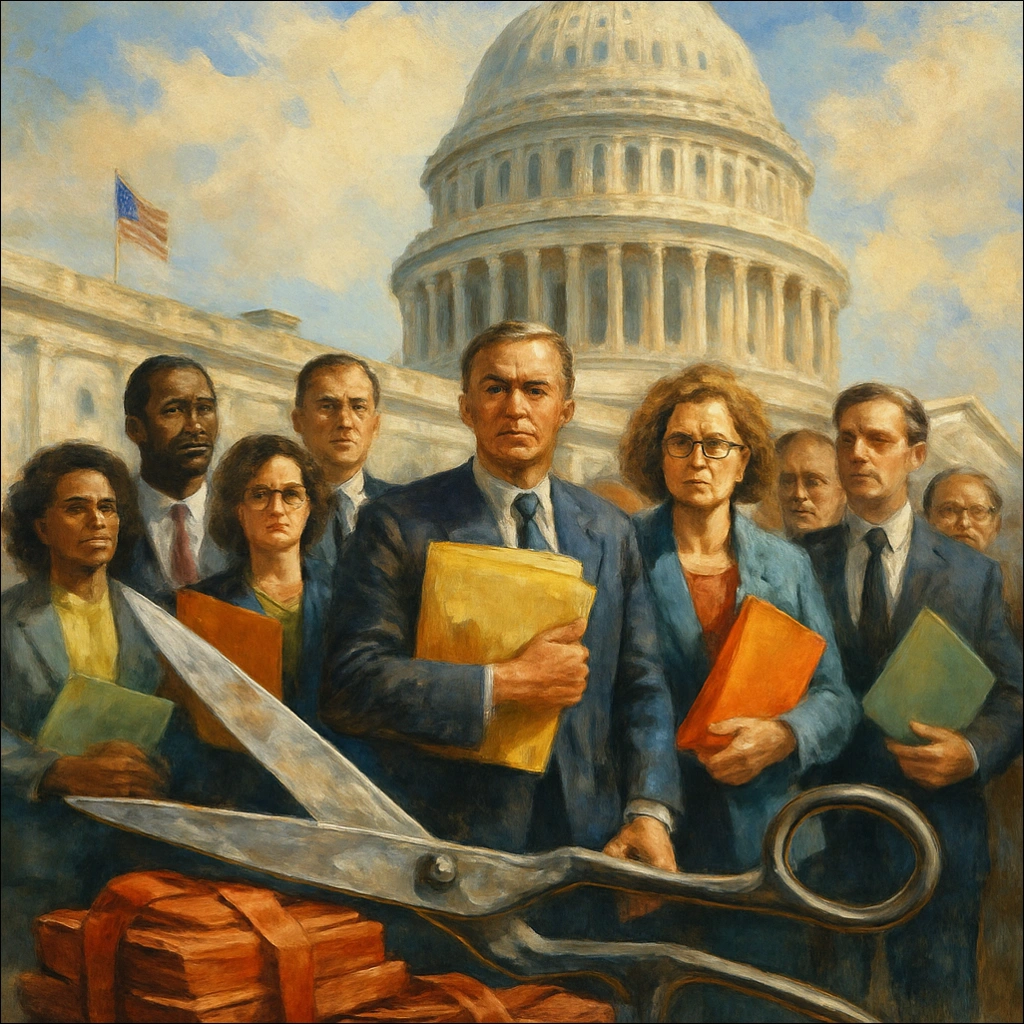In the ongoing battle to rein in government spending and create a more efficient federal apparatus, the Department of Government Efficiency (DOGE) initiative represents one of the most ambitious efforts in recent memory. With $160-200 billion in claimed savings already identified12, the time has come to transform these executive actions into permanent legislative reforms through codification in the “One Big Beautiful Bill.”
From Executive Action to Legislative Permanence
The DOGE initiative has demonstrated remarkable success in targeting wasteful spending across the federal government. From cancelling a $2.9 billion migrant children facility contract to terminating a $1.9 billion IRS IT contract1, these cuts exemplify how strategic fiscal discipline can be implemented without compromising essential services. However, these achievements face a critical vulnerability: as executive actions, they remain susceptible to reversal by future administrations.
The solution is clear—codify these cuts through the reconciliation process within the “One Big Beautiful Bill.” This approach aligns perfectly with the Congressional Budget and Impoundment Control Act of 1974, which established reconciliation specifically for budget-related legislative actions34. As the House and Senate have already approved the budget resolution framework in April 20255, the legislative groundwork is in place to incorporate these savings into permanent law.
The Perfect Legislative Vehicle
The reconciliation process represents the ideal pathway for codifying DOGE cuts for several compelling reasons. First, it limits Senate debate to just 20 hours67, preventing potential filibuster tactics that might otherwise derail fiscal reforms. Second, it requires only a simple majority for passage68, making it the most efficient legislative mechanism available for enacting these critical savings.
As Representative Jason Smith, Chair of the House Ways and Means Committee, prepares the “One Big Beautiful Bill” to address tax policy and government spending59, incorporating DOGE cuts would seamlessly align with the bill’s stated purpose while leveraging the reconciliation process’s procedural advantages.
The Path to Zero Inflation
The ambitious goal of achieving zero inflation by 2026 through $4 billion in daily spending cuts requires the stability and permanence that only codification can provide. With the federal budget reaching $6.75 trillion last fiscal year1, transforming DOGE’s ad-hoc executive actions into systematic, permanent reforms is essential for meaningful fiscal impact.
By incorporating DOGE cuts into the “One Big Beautiful Bill,” Congress can ensure these savings continue beyond the current administration while addressing America’s broader fiscal challenges. This approach would not only preserve the progress already made but would also establish a framework for ongoing efficiency improvements across the federal government.
Conclusion
The time for half-measures and temporary solutions has passed. America’s fiscal health demands the permanent, legally sound reforms that can only come through legislative codification. By incorporating DOGE cuts into the “One Big Beautiful Bill” through the reconciliation process, Congress can transform promising executive actions into enduring fiscal discipline—securing not just immediate savings but a more efficient, accountable government for generations to come.
Footnotes
-
How much has Elon Musk’s Doge cut from US government spending? ↩ ↩2 ↩3
-
DOGE has made a big impact on Washington. But government … ↩
-
Budget Reconciliation, Simplified | Bipartisan Policy Center ↩
-
Budget Reconciliation: Key Legislative Tool Explained - National Law Review ↩
-
House Passes 2025 Budget Resolution, Setting Stage for Tax Cuts and … ↩
-
“Big Beautiful Bill” House GOP Tax Plan: Details & Analysis ↩
